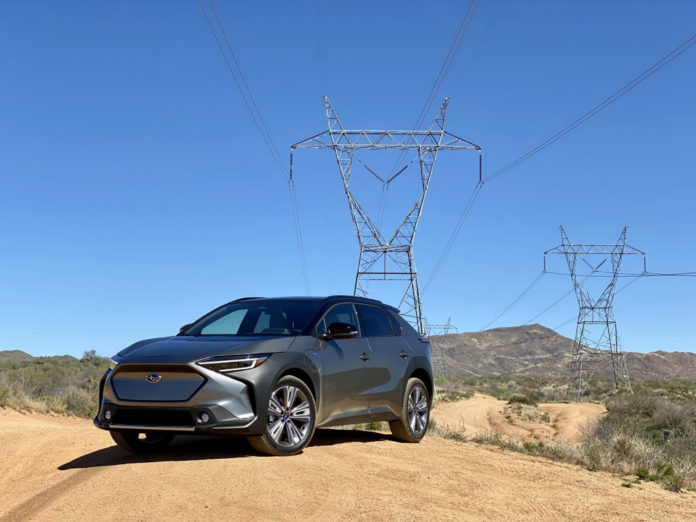Going off-road in a Subaru crossover is nothing new. Climbing toward the sun in the high desert of Arizona’s Tonto National Forest in Subaru’s first electric crossover is something else altogether.
Bridging sun and earth, the 2023 Subaru Solterra arrives late to the electric party, and makes more inroads for the brand than it does for the EV marketplace. Built in partnership with Toyota and mechanically and cosmetically related to the Toyota BZ4X, which is also Toyota’s first mass-produced global electric vehicle, the Solterra lives in the shadow of its twin.
But the Solterra sheds Toyota’s skin doing what Subarus are known for: taking its off-road prowess on trail. Getting to the access roads beyond Scottsdale required more everyday driving, and Subaru’s dual-motor system proved adequate if not anodyne. Each 80-kw motor powers an axle, and the 249 lb-ft of torque has a variable split, shifting torque 40/60 between front and rear axles under heavy acceleration, and 70/30 when braking to prevent understeer.
From a stop, it can accelerate to 60 mph in about 6.5 seconds and it’s lighter than some rivals, topping out at 4,505 lb in top Touring trim (the base Premium weighs 4,365). When it comes to acceleration, there isn’t much difference in the normal, Eco, or Sport drive mode settings that can be activated with a simple button push on the console.
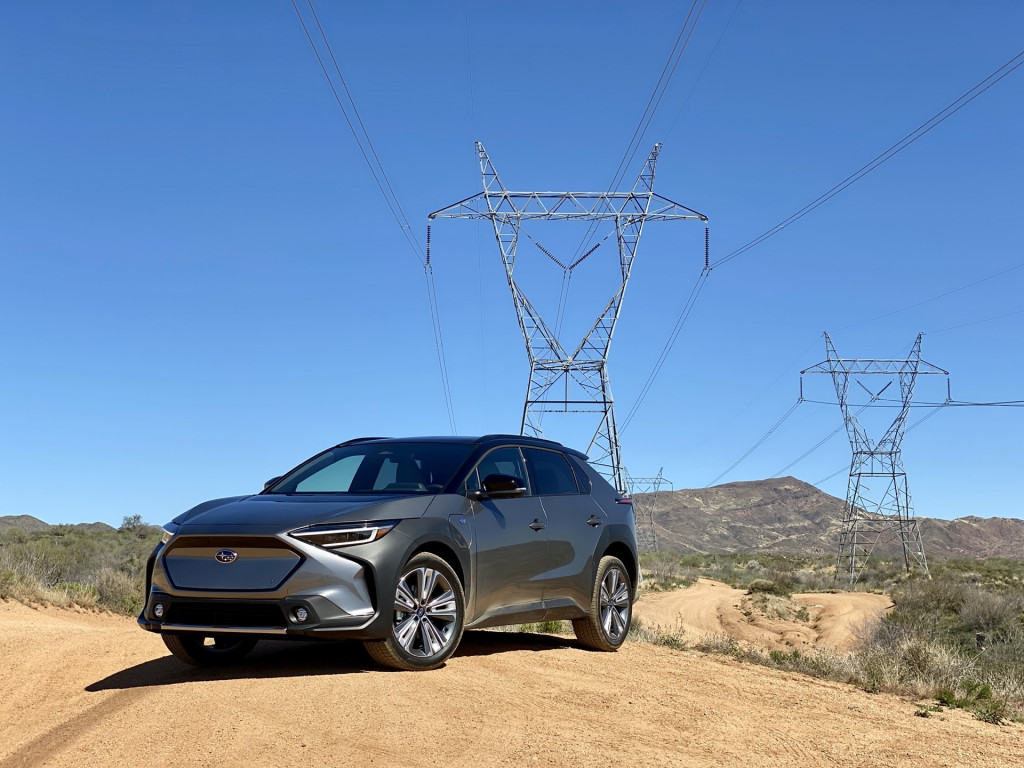
2023 Subaru Solterra
It’s not just remarkably quiet for a Subaru, whose flat-4s can run loud with a CVT, it’s quiet for an electric car, lacking any motor whir. It’s well-insulated from the road as well, with only a bit of highway noise coming from the all-season tires wrapped around the tester’s 20-inch wheels (18s are standard). It rides quietly and composed as well, with struts up front and a double-wishbone setup in back, but it can be willowy on undulating terrain. I wasn’t pushing it hard on the paved 90-degree intersections outside Scottsdale, but Solterra owners won’t mistake this for an autocross car, unless or until the STI performance department gets a shot at it. Steering doesn’t provide much feedback, but the small-diameter wheel points and goes where directed.
Like the drive modes, the five regen brake settings didn’t differentiate themselves too much. Paddle shifters adjust four of the settings, and the fifth button is an S-Pedal or one-pedal-drive button in the console. Unlike other EVs, it didn’t lurch when I let off the accelerator and doesn’t grab the brakes into a stop. At about 3 mph, I consistently had to apply the brakes. Once stopped, it defaulted to a creep mode, likely to simulate a gas car in keeping with the conservative approach of Toyota’s—I mean, Subaru’s—first electric car. An auto hold button kept it still at stops without the brake.
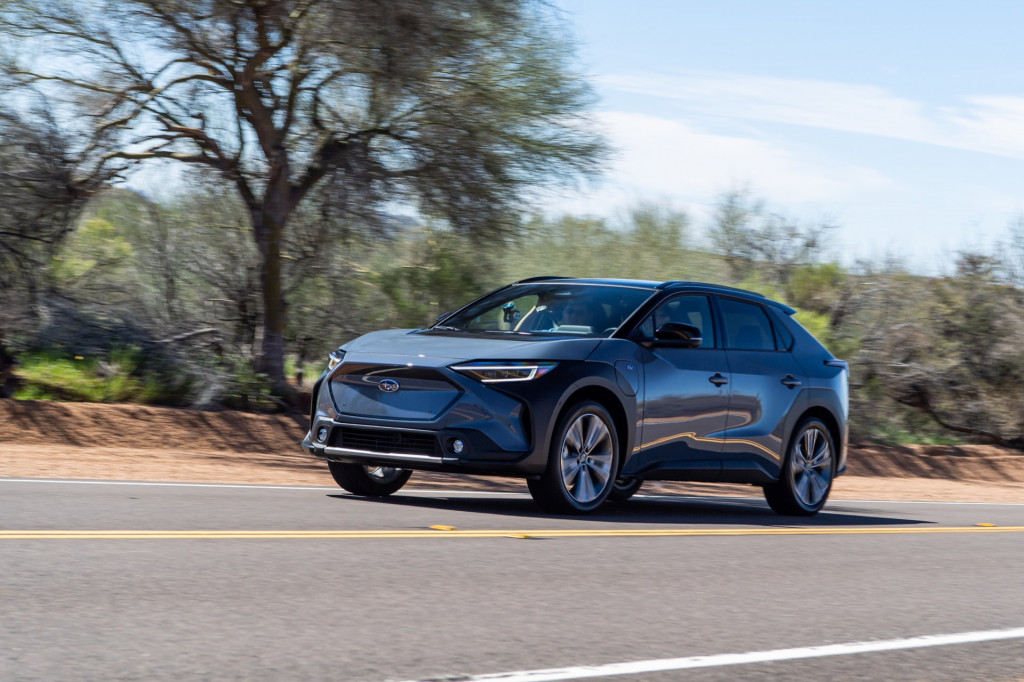
2023 Subaru Solterra
This leg of the trip took me 48 miles at a rate of 2.8 miles/kwh, which based on how I was driving aligned with the EPA’s 3.1 miles/kwh conversion. Most of it was with the S-Pedal on, but the accelerator saw a lot of action. The range meter started off with a reading of 295 miles, which dropped to 230 as soon as I set the A/C to 70 degrees. The EPA says it has a 220-mile range (228 in the base model) and 102 MPGe combined (104 in the base model). The confounding thing about the Solterra is there is no display for battery percentages. Subaru said it was so as not to confuse EV noobs, but I am no noob and I was a bit confused. Anyway, I covered 48 miles and it cost me 59 miles according to the range estimeter.
Some other oddities about the Solterra, which has Toyota’s DNA all over the cockpit, is that there’s no glovebox and the instrument cluster sits at the end of a plastic tray extending from the front of the dash until it nearly touches the windshield. It feels as distant as a head-up display, and the small power meter alongside Toyota’s even smaller vertical menu bar for vehicle info is an odd use of real estate. The top of the wheel can block some of the display, but seat and steering wheel adjustments resolve it.
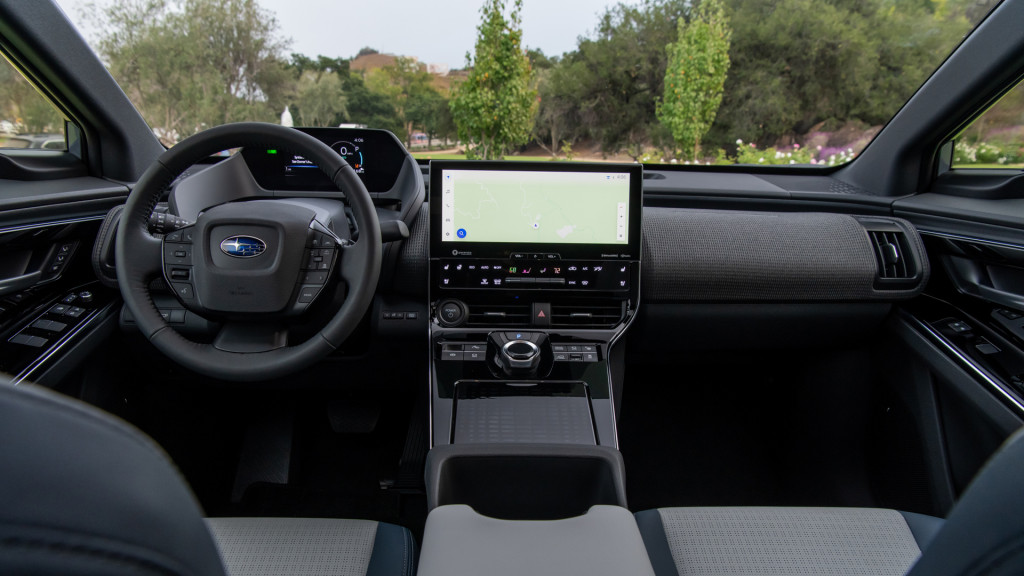
2023 Subaru Solterra
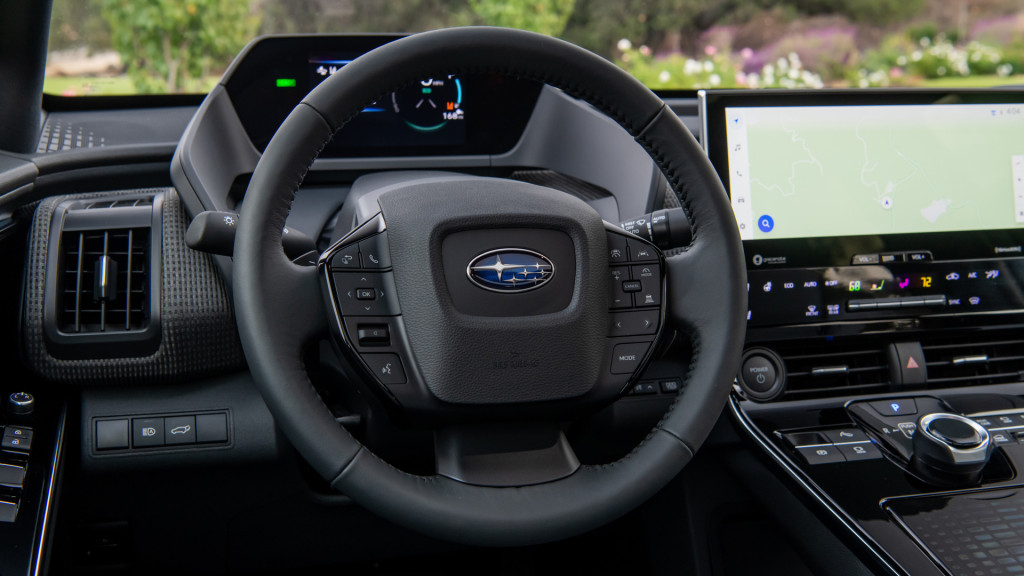
2023 Subaru Solterra
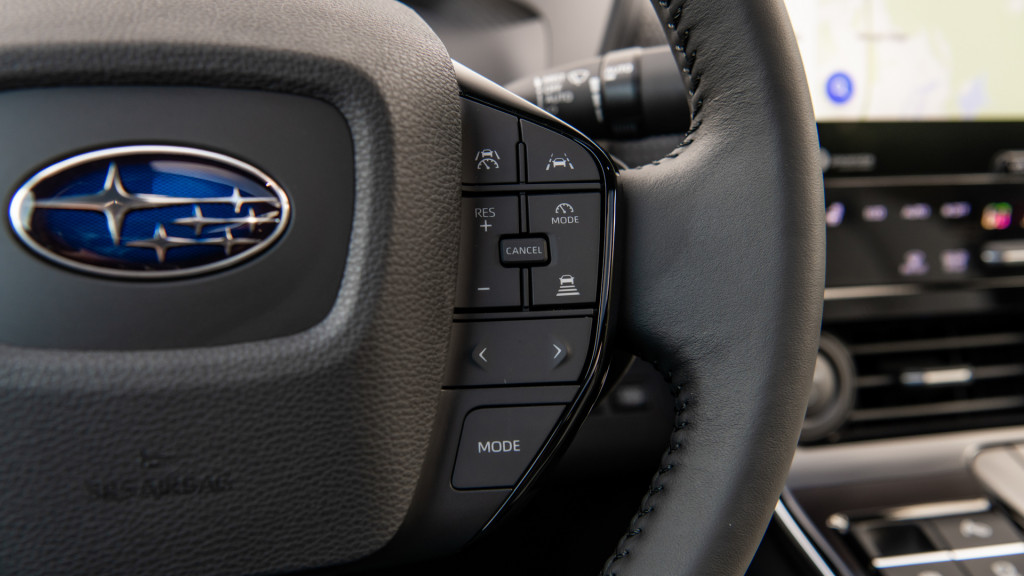
2023 Subaru Solterra

2023 Subaru Solterra
Other notable features inside include a crossbar splitting the panoramic sunroof. For safety, Subaru says. Another is a wide center console that’s uncharacteristic for an EV. It eats up front leg room, but it’s tiered, so the lower shelf replaces the glovebox. Covered in acres of smudgable gloss black plastic, it at least houses drive mode and off-road settings so you don’t need to hunt around the available 12.3-inch touchscreen, which is Toyota’s latest, much-improved iteration. It’s good enough to forget the past, and the voice commands are even better, but it doesn’t automatically populate the nearest chargers, even with the EVgo network that’s partnered with Subaru.
Lastly, an Eco button for climate control automatically sets the seat heating and cooling and uses less energy than the standard HVAC. Using the occupant detection system, it directs vent heating and cooling to only those occupied seats.
It all felt very Toyota, until the pavement ended and the access road descended into the desert valley. Even with all the traction control settings active, the rear tapped out and went a bit sideways on the loose dusty gravel. It corrected itself quickly, proving its Subaru system, and turning off the first level of stability control gave power back to the driver. The higher-speed off-roading was the highlight of my time in the Solterra, and it proved itself equally capable on more challenging terrain.

2023 Subaru Solterra
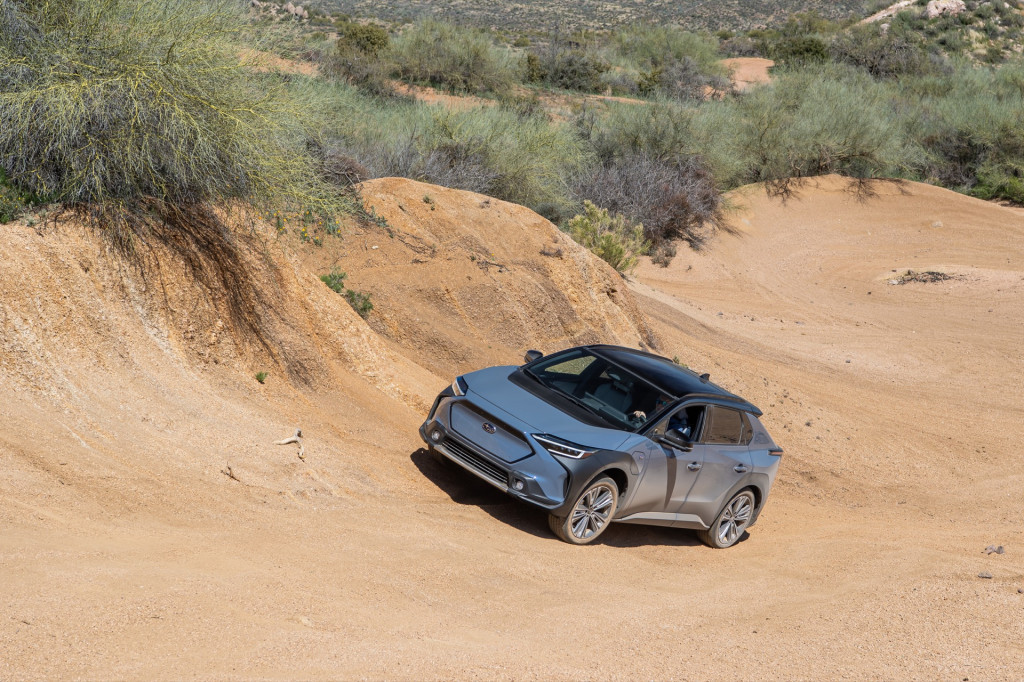
2023 Subaru Solterra
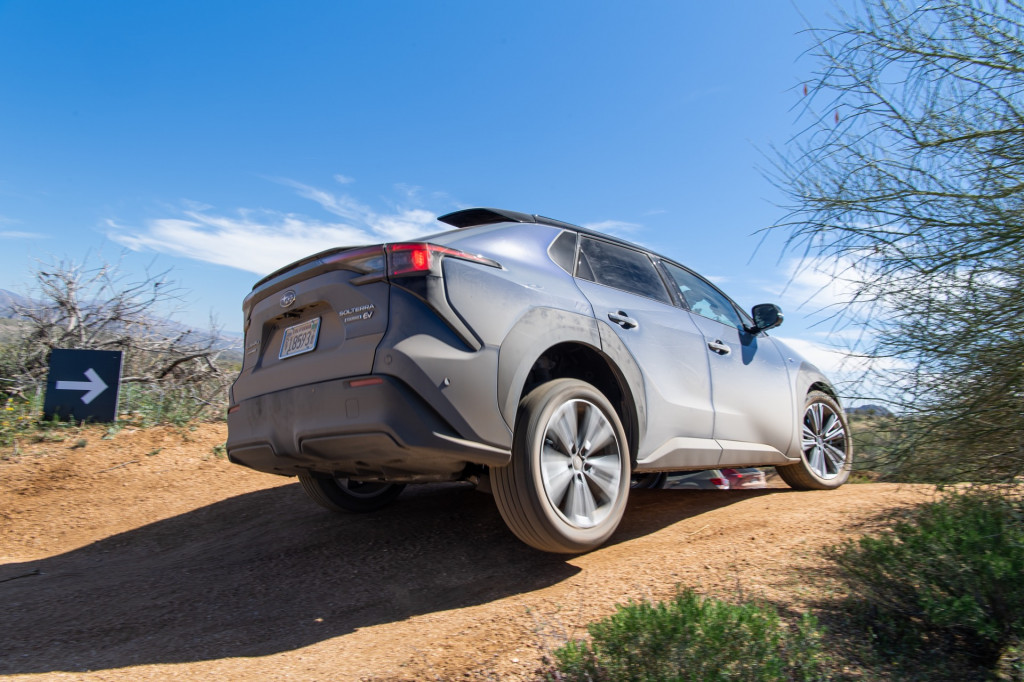
2023 Subaru Solterra
With X-Mode set to the Snow/Dirt setting, it climbed up uneven ascents strewn with loose rock and all the dusty desert dirt. A third X-Mode setting called Grip Control behaves like an off-road cruise control so drivers can focus on the obstacles, not the pedals, both uphill and downhill. Three settings between 3 and 5 mph can be controlled through a toggle in the console, and the driver can override the setting with the accelerator, then the system will reactivate once below the threshold. It works well, but must be activated from a stop with the gear setting in drive. When one wheel slipped, or articulated off the ground, the other wheels pulsed and grabbed until it righted itself. It would help newcomers get a taste for deeper off-road terrain and instilled confidence in its abilities.
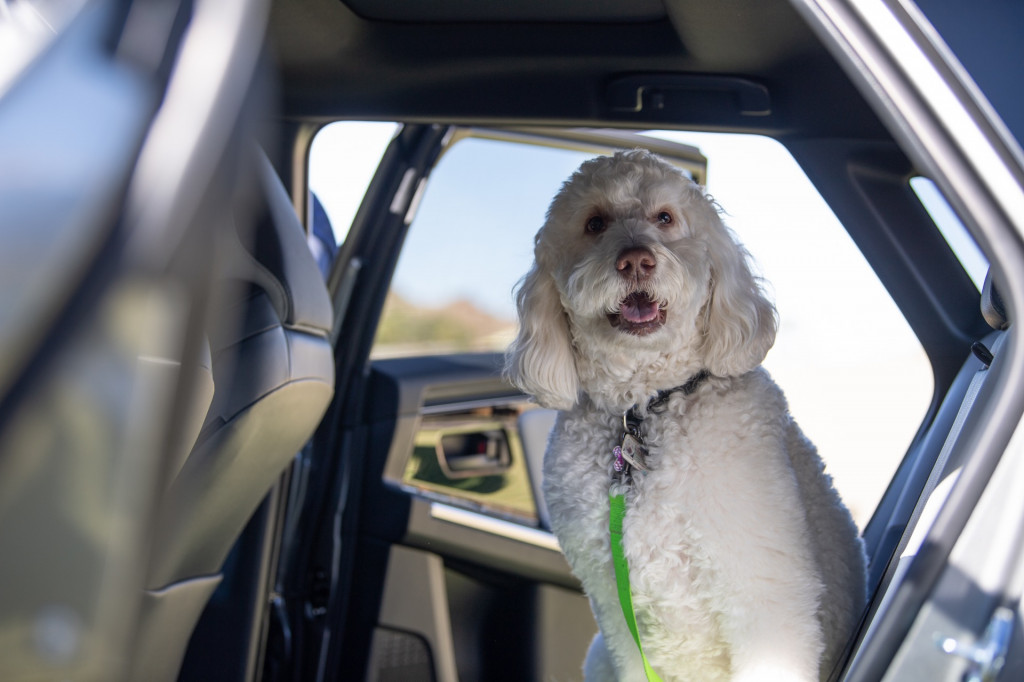
2023 Subaru Solterra
The desert didn’t allow me the chance to test the Solterra’s wading depth of 19.7 inches, but the Solterra felt as off-road capable as any other Subaru SUV, and more than capable of rival electric crossovers. Subaru’s 8.3 inches of ground clearance is 1.6 inches more than the next-best electric crossover competitor, the Volkswagen ID.4, and it boasts better approach and departure angles than rivals.
This capability appeals in the Subaru way, and the initial production run of 6,500 units has already been reserved by the Subie faithful. Even though it looks and feels like a Toyota, and doesn’t evolve the electric vehicle space, that should be enough. For now.






